The treasure trove of natural wonders, architectural marvels, and pleasant surprises, Himachal Pradesh is one of the most popular tourist destinations in India.
This hilly state offers an amazing refuge to tourists from the scorching heat of summers. This is a perfect tourist destination to enjoy the vacation. With Himachal tours, travelers can enjoy their holiday and make their trip memorable.
This beautiful destination is an ideal place for thrill-seekers to partake in adventure activities throughout the year. It is an amazing weekend getaway for the travelers of Chandigarh, Haryana, Punjab, Jammu, and Delhi.
Blessed with breathtaking landscapes, placid lakes, high-altitude mountain passes, wildlife reserves, ancient temples, prehistoric monasteries, and verdant valleys, Himachal Pradesh leaves the travelers awestruck with its immense beauty and rich cultural heritage.
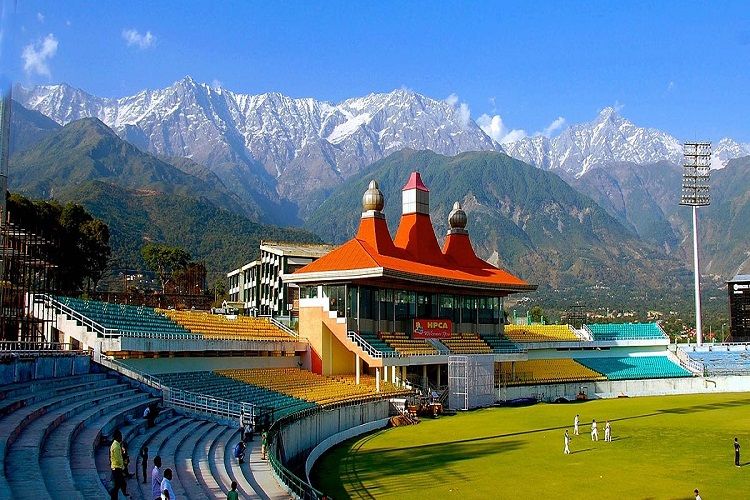
Located in the lap of the snow-clad Himalayas, Himachal Pradesh extends from plains to the high altitude mountainous region. Each city, town, and village of Himachal Pradesh has its own uniqueness and mysteries that everyone wishes to unveil.
There are many interesting facts about Himachal Pradesh, that most people are not aware of. Here is the list of exciting facts about Himachal Pradesh, which can provide a deep insight into the richness and abundance of this beautiful state.
1. If you have not tried to understand the deeper meaning of the word ‘Himachal’ then you have missed the basic idea of the sheer existence of this enchanting state. It is a blend of the Sanskrit words, ‘Him’ and ‘Anchal’, which means ‘snow’ and ‘lap’ respectively. It is no coincidence that the state is located in the lap of the snow-clad Himalayas.
2. The state comprises four districts, Mandi, Chamba, Mahasu, and Sirmour, with 30 princely states, which led to the formation of Himachal Pradesh as a Union Territory in 1948. Eventually, in 1971, the province attained statehood and became the 18th state in India.
3. Shimla is the summer capital of Himachal Pradesh, which is perched atop seven hills and is popularly referred to as the ‘Queen of Hills’.
4. The winter capital of the Himachal Pradesh is Dharamshala, which is fondly referred to as ‘Little Lhasa in India’ as it is home to Dalai Lama, the spiritual leader of the Tibetan people and Tibetan government-in-exile.
5. Shimla is home to South Asia’s only natural ice skating rink. This is the oldest ice skating rink in Asia.
6. The state of Himachal Pradesh came into existence post-independence, so it has no pre-constitution history.
7. Bir Billing is the first place in India where paragliding was held in 2015. It is one of the most natural locations for paragliding in the world.
8. Do you know about the sex ratio of Himachal? Hamirpur has 1096 females, Lahaul Spiti has 1033 females, Kangra has 1013 females, and Mandi has 1012 females per 1000 males. It is among the highest in the country.
9. It is a rural majority state and almost 90% of the population in Himachal Pradesh lives in the rural area.
10. Shimla comprises the largest urban population of the state, which is almost around 25% of the total.
Book your personalized Himachal with Amritsar Itinerary
11. Malana Village in Parvati Valley of Himachal Pradesh is considered one of the oldest democracies in the world. It has been believed that the locals have pure Aryan genes and are the descendants of Alexander the Great. This village is isolated from the rest of the world and tourists are not allowed to touch anything here or stay there at night.
12. Malana Village produces the world-famous hashish, which is also known as Malana Cream. It has won the title of ‘Best Hashish’ twice; once in the year 1994 and again in 1996 at High Times magazine Cannabis Cup.
13. Owing to its topography, Himachal Pradesh has a humongous network of state and national highways, which is amounting to a total of 28,208 km comprising 8 national highways and 19 state highways.
14. Not very surprisingly, the state animal of Himachal Pradesh is the Snow Leopard, which has shown the state’s commitment toward the conservation of this endangered species. This elusive big cat can be found in Spiti Valley, the state’s high-altitude region. Spiti Valley also experiences snowfall, making it one of the best places to see snowfall in Himachal Pradesh.
15. Western Tragopan is the state bird of Himachal Pradesh. The population of Western Tragopan is threatened by several anthropogenic factors. This bird is endemic to the northwest Himalayas and this comes under the high reservation concern by ‘State of India’s Bird 2020’.
16. The flower symbol of Himachal Pradesh is Pink Rhododendron, which is locally known as ‘Gulabi Buransh’. It is originally a native of Asia and a rare type of rhododendron that is only found close to the tree line in high ranges.
17. The Indian Cedar or Himalayan cedar is the tree symbol of Himachal Pradesh, which is the symbol of prosperity and veneration.
18. The agricultural sector provides direct employment to over 65% of the population of Himachal Pradesh. Due to its hilly terrain, the economy of the state is predominantly mixed farming, agro-pastoral, Silvi-pastoral, and agro-horticultural.
19. Roughly 22% of the total state domestic product is attributed to income from agriculture and allied sectors.
20. The Kalka-Shimla Railway is fondly known as the Toy train. It is a UNESCO World Heritage Site and this railway holds the record to cover the steepest slope of over 5,800 feet, just 96 km. The train crosses over 800 bridges and 100 tunnels during the journey.
21. Himachal Pradesh is the second least corrupt state in the nation followed by Kerala. The breathtaking beauty of Himachal Pradesh attracts a plethora of tourists, however, the friendly nature, sincerity, and kind behavior of locals add to the visitor experience.
22. As per government records, Himachal Pradesh is the third best state in terms of performance and overall development.
23. In 2013, Himachal Pradesh has declared the first smoke-free State in the country.
24. Home to nearly 17,000 educational institutes, including two medical colleges, three universities, and one engineering college, Himachal Pradesh is a state with the highest literacy rate.
25. As per the data recorded in 2020, the literacy rate of Himachal Pradesh is 86.6%. With the whooping male literacy rate of 89.53% and the female literacy rate of 75.93%, Himachal Pradesh has the 4th highest literacy rate in India followed by Kerala, Delhi, and Uttarakhand.
26. With a staggering 37,033 square kilometers of forest area, which makes 66.52% of the total land area Himachal Pradesh is among the greenest states in the country.
27. Home to 33 wildlife sanctuaries and 2 national parks. With almost 12,000 sq. km of area under wildlife sanctuaries and national parks, Himachal Pradesh is an abode of a plethora of exotic flora and fauna along with wildlife species. Among them, the Great Himalayan National Park is declared a UNESCO World Heritage Site, which is home to some rare species including barking deer and Snow Leopard.
28. This exquisite state is home to one of the largest glaciers in Asia. The Bara Shigri Glacier is located in the Lahaul Spiti area and feeds the Chenab River. With a length of 30 km, it is the second-longest glacier in the Himalayas after Gangotri Glacier.
29. The national highway connects to Ladakh from Manali takes the travelers from the highest altitude mountain passes and is among the highest motorable roads in the world.
30. The Great Himalayan National Park is situated in the Tirthan Valley. It is recognized as a UNESCO World Heritage Site. This national park spreads across nearly 1,200 square kilometers and is home to a vast variety of flora and fauna.
31. Reo Purgyil is the highest mountain peak in Himachal Pradesh with an altitude of 6,816 m above sea level.
32. Himachal Pradesh is home to 17 high-altitude mountain passes and there are as many as 70 mountain passes in the state. The Dhauladhar range has the maximum number of mountain passes.
33. Chail Cricket Stadium is famed to be the highest cricket stadium in the world. It was built in 1891 and is located in Chail, Himachal Pradesh at an altitude of 2,444 m above sea level.
34. Himachal is popularly known as the Land of Gods. The state is mentioned in many ancient Hindu texts and is home to several religious centers including ancient temples and old-age monasteries. Locals from each village have their own distinct customs and deities in this culturally rich state.
35. The production, distribution, and use of polythene bags made of non-biodegradable materials are banned in the state.
36. Fondly known as the ‘Fruit Bowl of India’, Himachal Pradesh produces a wide variety of fruits including apple, pear, peach, apricot, and plum. The fruit production turnover of Himachal Pradesh is almost 3 billion annually.
37. Besides this, the state also produces dry fruits including cashew, peanut, groundnut, dry apricot, pistachio, chilgoza or pine nut, and hazelnut. Among them, chilgoza or pine nut is a rare nut that is grown in the state only.
38. Himachal’s Solan is popularly known as the ‘Mushroom City’ because of the widespread mushroom production in the city.
39. The hill town of Khajjiar is widely known as the ‘Mini Switzerland’ owing to its breathtaking natural beauty and jaw-dropping locales.
40. Followed by Jammu and Kashmir, Himachal is the second-largest producer of apples in India. On average, Himachal produces over 4 lakh tons of apples each year. Apple is the most important fruit crop of Himachal Pradesh, which constitutes about 49% of the total area under fruit crops and about 85% of the total fruit production. The area under apple has increased from 400 hectares in 1950-51 to 3,025 hectares in 1960-61 and 1,11,896 hectares in 2016-17.
41. Home to several prominent Indian celebrities like Preity Zinta, Kangna Ranaut, Anupam Kher, Mohit Chauhan, and Yami Gautam belongs to Himachal Pradesh. Also, popular sportspersons hailing from Himachal who bring laurels for India at the international level are Vijay Kumar (Shooting), Anuja Jung (Shooting), Deepak Thakur (Hockey), Samresh Jung (Shooting), Suman Rawat (Athletics), and Ajay Thakur (Kabaddi).
42. One of the most celebrated and attended festivals of Himachal Pradesh is Kullu Dussehra, which is a 7-day festival. It was started by the 17th-century king, Jagat Singh.
43. Located in the Kullu district and Parvati Valley, Kasol is a quaint hilly town popularly known as ‘Mini Israel’. Frequented by Israeli tourists, the town’s many establishments bear signage in Hebrew.
44. As per the Hindu Mythology, the Chamba Kailash peak in Himachal Pradesh is an abode of the Hindu God Shiva. Overlooking Manimahesh Lake, the area is considered holy and auspicious by Hindus.
45. A majority of the cities, villages, and towns of the state lie in the foothills of the Dhauladhar range.
46. It is said that the acclaimed Sanskrit scholar, Acharya Diwakar Datt Sharma, christened the state in 1948.
47. It is believed that civilization flourished in the present-day area of Himachal 4,000 years ago, during the period of the Indus Valley Civilization.
48. With its extensive lush greenery and dense forests, it is no surprise that Himachal Pradesh is home to over 350 animal species and 450 bird species.
49. As per government reports, Himachal Pradesh has achieved 100% sanitation. Each house in the state has a toilet.
50. Owing to its fast development, the poverty levels in Himachal Pradesh witnessed a steep decline from 36.8% in 1993 to 8.5% in 2011.
51. India’s first elections were held at Kalpa in the Kinnaur district of Himachal Pradesh. This was done as the Kinnaur region used to get cut off from the rest of the country for over 6 months every year, due to heavy snowfall. Therefore, India’s first polling station was set up in Kalpa, Himachal Pradesh.
52. The oldest voter of India namely Shyam Saran Negi hails from Kalpa in Himachal Pradesh. He is a retired schoolteacher who cast the first vote in the 1951 general elections and has voted in every general election since then.
53. It is home to some of the oldest running boarding schools in the country that were established during the British era including Bishop Cotton School (Shimla), The Lawrence School (Sanawar), Convent of Jesus, and Mary (Shimla), and Gorton Mission School (Kotgarh).
54. The state comprises numerous hydroelectricity plants that produce surplus electricity, which is further sold to Delhi, Punjab, and Rajasthan. Himachal Pradesh accounts for 25% of India’s total hydropower potential.
55. Himachal Pradesh is famous for adventure activities and sports. From ice skating, paragliding, fishing, rafting, and skiing to trekking and horse riding, this place is full of adventures that one can explore.
56. In Shivalik Fossil Park, which is located in the Sirmaur district the archeology department has discovered fossils that are 85 million years old.
57. Spiti Valley is located at an average altitude of 3,800 m above sea level, which is the highest in Himachal Pradesh.
58. Komik Village is the highest village connected by motorable road in the world. This is the highest settlement which is located at 4,587 m above sea level. The polling station is also considered the world’s highest.
59. Hikkim Village is home to the highest post office in the world, which connects small villages in this isolated region. This quaint village is nestled at an altitude of 4,440 m above sea level.
60. Langza is a Himalayan village which is situated in Spiti Valley and is renowned as a fossil village. This is one of the most villages in the state where tourists can find fossils of marine animals and plants that were found in the Tethys Sea millions of years ago.
61. Shimla Mirch or capsicum is native to Himachal Pradesh. The plantation of capsicum was first introduced by the British.
62. Himachal Pradesh also houses the second oldest church in North India, which is located in Shimla and was constructed in 1857. Christ Church is an architectural marvel that is known for its stained-glass windows and its neo-gothic architecture.
63. Himachal Pradesh is endowed with several important minerals like gypsum, mica, clays, barytes, limestone, iron, lead, and pyrite.
64. Some of the famous fairs and festivals of Himachal Pradesh are Baisakhi, Lavi, Holi Fair, and Kullu Dussehra. A large number of tourists flock to Kullu to attend the Dussehra festival.
65. Popular dance forms native to Himachal Pradesh are the Gugga Dance, Losar Shona Chuksam, Ghurehi, and Kullu Naati.
66. Himachal Pradesh is the first Indian state to launch a paperless e-governance solution, known as eVidhan.
67. The literacy rate of Himachal Pradesh is higher than the average literacy rate of the country. This state also has its own IIT in Mandi, which is among the most reputed educational institutions.
68. Dynamically known for apple production, Himachal Pradesh is also among the largest producers of food grains. The food grain production in the state is approximately 1,579,000 tonnes.
69. Owing to the wide range of agro-climatic conditions with an elevation range of 2,000 to 4,500 m above sea level, Himachal Pradesh enjoys ample scope to cultivate various important crops in the state. The approximate vegetable production in the state is 900,000 tonnes.
70. Producer of world-renowned Apple, Himachal Pradesh is famous for the production of other fruits as well such as plum, litchi, mango, guava, loquat, papaya, and ber. The approximate fruit production in the state is 1,027,000 tonnes.
71. Virbhadra Singh was the Chief Minister with the longest term in the state. He was in the office for 21 years and 11 days.
72. Sh. S. Chakravarti was the first governor of Himachal Pradesh.
73. Kangra, and most of the other hilly areas of Punjab, were merged with the state in 1966.
74. If a non-agriculturist requires to buy agricultural land, then they state the purpose behind buying the land to the government. The administration decides within a set timeframe.
75. Some of the major industrial areas in the state are Baddi, Parwanoo, Mehatpur, Shamsi, Gagret, and Bilaspur.
76. Fondly referred to as the ‘Land of Gods’, Himachal Pradesh is home to some of the renowned temples in the country including Tara Devi Temple, Jakhoo Temple, Hadimba Devi Temple, Naina Devi Temple, Baba Balak Nath Temple, Jwala Devi Temple, Chintpurni Temple, and Chamunda Devi Temple.
77. Home to some of the oldest and world-famous Buddhist Monasteries, Himachal Pradesh is one of the most celebrated destinations for the followers of Buddhism. The popular monasteries of Himachal Pradesh are Key Monastery, Namgyal Monastery, Sherbaling Monastery, Guru Ghantal Monastery, Tabo Monastery, Dhankar Monastery, Kungri Monastery, Tsuglagkhang Complex, and Lhalung Monastery.
78. Famous churches in Himachal Pradesh are St. Michael’s Cathedral, Christ Church, and St. John’s Church.
79. High altitude glacier lakes are among the amazing places to visit in Himachal Pradesh including Chandratal Lake, Dal Lake, Gobind Sagar Lake, Khajjiar Lake, Manimahesh Lake, Nako Lake, Parashar Lake, Suraj Tal Lake, Serolsar Lake, and Renuka Lake.
80. Suraj Tal Lake is the highest lake in Himachal Pradesh and is the third-highest lake in India. Nestled at an altitude of 4,890 m above sea level, Suraj Tal Lake is the 21st highest lake in the world.
81. The famous Gurudwaras in Himachal Pradesh are Gurudwara Bhangani Sahib, Paonta Sahib, and Rewal Sahib Gurudwara which are being flocked by the pilgrims throughout the year.
82. There is a 500 years old Mummy of Sangha Tenzin on display at the Geu monastery in Lahaul and Spiti district of Himachal Pradesh.
83. There are 169 tehsils/sub tehsils in Himachal Pradesh and the state has 59 towns.
84. Himachal Pradesh has 3226 gram panchayats.
85. Famous for its handicrafts including carpets, paintings, leather works, stoles, and more, Himachal Pradesh is a major market for handloom and handicrafts.
86. Before India’s independence from the British, Himachal comprised the hilly regions of Punjab Province of British India.
87. In 1966, hilly areas of neighboring Punjab state were merged into Himachal and it was ultimately granted full statehood in 1971.
88. In 1972-73, the state was reorganized into 12 districts.
89. Bilaspur was merged into the state in 1954.
90. Lentils, rice, vegetables, and chapati form the staple food of the state.
91. Situated in the Western Himalayas, it is one of the eleven mountain states and is characterized by an extreme landscape featuring several peaks and extensive river systems.
92. Himachal Pradesh is the northernmost state of India and shares borders with the union territories of Jammu and Kashmir and Ladakh to the north, the states of Punjab to the west, Haryana to the southwest, Uttarakhand to the southeast, and a very narrow border with Uttar Pradesh to the South. The state also shares an international border to the east with the Tibet Autonomous Region in China.
93. The hilly state is almost universally electrified with 99.5% of the households having electricity as of 2016.
94. Himachal Pradesh was colonized by people from the Indus valley civilization who flourished here between 2250 and 1750 BCE.
95. As per the local folklore, the Kols and Mundas were the original inhabitants of the hills of present-day Himachal Pradesh followed by the Bhotas and Kiratas.
96. The drainage system of Himachal is formed by both rivers and glaciers. Himalayan rivers criss-cross the entire mountain chain.
97. Himachal Pradesh provides water to both the Indus and Ganges basins. The drainage systems of the region are the Chandra Bhaga or the Chenab, the Ravi, the Beas, the Sutlej, and the Yamuna. These rivers are perennial and are fed by snow and rainfall.
98. Four of the five rivers of Punjab flow through the state, three of them originating here.
99. Himachal Pradesh is one of the states that lies in the Indian Himalayan Region (IHR), one of the richest reservoirs of biological diversity in the world.
100. Tourism in Himachal Pradesh is a major contributor to the state’s economy and growth. The Himalayas attract tourists from all over the world.
101. Hinduism is the major religion in Himachal Pradesh. More than 95% of the total population adheres to the Hindu faith and majorly follows Shaivism and Shaktism traditions
Conclusion
We bet you didn’t know most of the things about this amazing state. Apart from going on vacations to various places here, we have never really looked into the facts that make Himachal Pradesh among the top tourist places and best states in the country. Besides, being a favorite holiday destination, it is home to hidden gems and some of the amazing offbeat tourist destinations in India. So, next time you go on a trip to Himachal Pradesh, you can surely boast about your knowledge and make the most of it too!
Related Post:

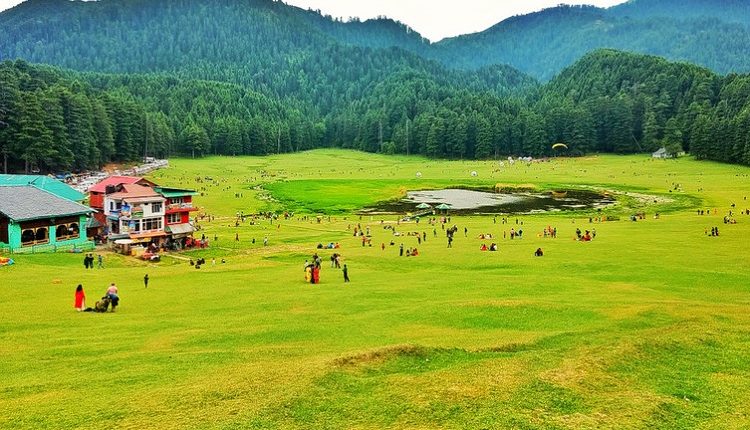
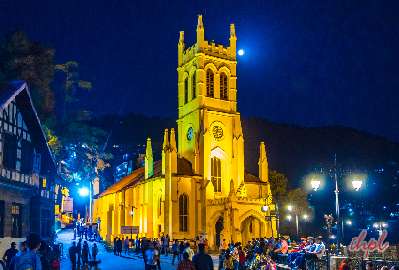 Shimla Calling Tour
Shimla Calling Tour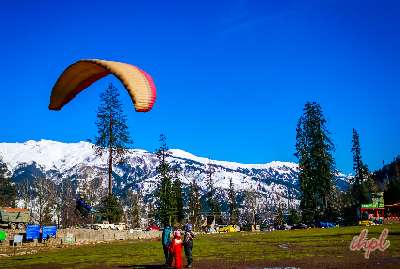 Enthralling Himachal Tour
Enthralling Himachal Tour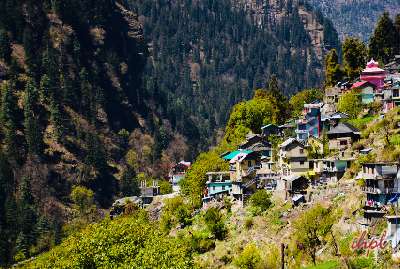 Spiti Valley Tour with Manali & Kasol
Spiti Valley Tour with Manali & Kasol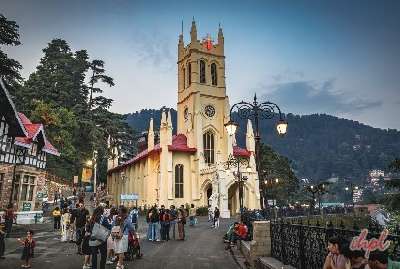 Best of Himachal Tour
Best of Himachal Tour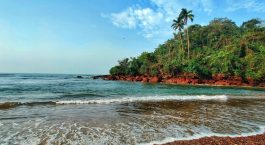
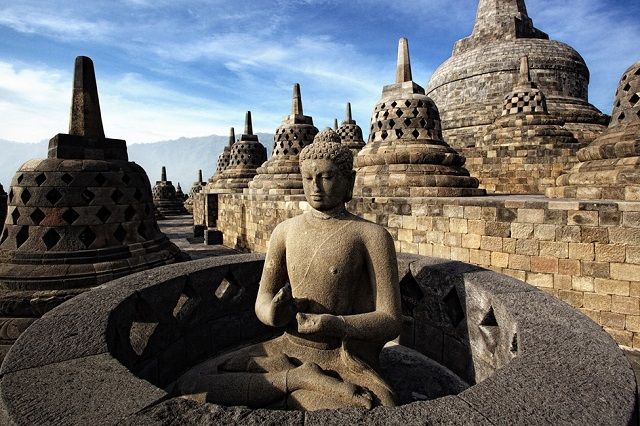

Leave a Comment